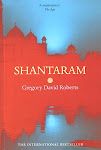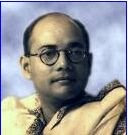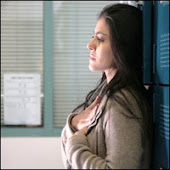History of the Hindi language
Chronological History of the Hindi language
Source:
http://www.cs.colostate.edu/~malaiya/hindiint.html
Hindi is a direct descendant of Sanskrit through Prakrit and Apabhramsha. It has been influenced and enriched by Dravidian, Turkish, Farsi, Arabic, Portugese and English. It is a very expressive language. In poetry and songs, it can convey emotions using simple and gentle words. It can also be used for exact and rational reasoning.
More than 180 million people in India regard Hindi as their mother tongue. Another 300 million use it as second language. Outside of India, Hindi speakers are 100,000 in USA; 685,170 in Mauritius; 890,292 in South Africa; 232,760 in Yemen; 147,000 in Uganda; 5,000 in Singapore; 8 million in Nepal; 20,000 in New Zealand; 30,000 in Germany. Urdu, the official language of Pakistan, spoken by about 41 million in Pakistan and other countries, is essentially the same language. Dakhini is an older, southern form of Urdu that uses fewer Persian or Arabic words.
Dialects of Hindi: Marwari, MAP Braj, map, Bundeli, map, Kanauji, map, Urdu, map, Chattisgarhi, map, Bagheli, map, Avadhi, map, Bhojpuri map, Maithili, –>and many others. It is not easy to delimit the borders of the Hindi speaking region. There has been considerable controversy on the status of Punjabi and Maithili, map . Sometimes they are regarded to be independent languages and sometimes dialects of Hindi. A 1997 survey found that 66% of all Indians can speak Hindi, and 77% of the Indians regard Hindi as “one language across the nation”.
Brief History of Hindi: Hindi started to emerge as Apabhramsha in the 7th cent. and by the 10 cent. became stable. Several dialects of Hindi have been used in literature. Braj was the popular literary dialect until it was replaced by khari boli in the 19th century.
Background: The period of Prakrits and Classical Sanskrit (dates are approximate):
750 BCE: Gradual emergence of post-vedic Sanskrit
500 BCE: Prakrit texts of Buddhists and Jains originate (Eastern India)
400 BCE: Panini composes his Sanskrit grammar (Western India), reflecting transition from Vedic to Paninian Sanskrit
322 BCE: Brahmi script inscriptions by Mauryas in Prakrit (Pali)
250 BCE: Classical Sanskrit emerges. [Vidhyanath Rao] 100 BCE-100 CE: Sanskrit gradually replaces Prakrit in inscriptions
320: The Gupta or Siddha-matrika script emerges.Apabhranshas and emergence of old Hindi:
400: Apabhransha in Kalidas’s Vikramorvashiyam
550: Dharasena of Valabhi’s inscription mentions Apabhramsha literature
779: Regional languages mentioned by Udyotan Suri in “Kuvalayamala”
769: Siddha Sarahpad composes Dohakosh, considered the first Hindi poet
800: Bulk of the Sanskrit literature after this time is commentaries. [Vidhyanath Rao]
933: Shravakachar of Devasena, considered the first Hindi book
1100: Modern Devanagari script emerges
1145-1229: Hemachadra writes on Apabhransha grammar
Decline of Apabhransha and emergence of modern Hindi:
1283: Khusro’s pahelis and mukaris. Uses term “Hindavi”
1398-1518: Kabir’s works mark origin of “Nirguna-Bhaki” period
1370-: Love-story period originated by “Hansavali” of Asahat
1400-1479: Raighu: last of the great Apabhramsha poets
1450: “Saguna Bhakti” period starts with Ramananda
1580: Early Dakkhini work “Kalmitul-hakayat” of Burhanuddin Janam
1585: “Bhaktamal” of Nabhadas: an account of Hindi Bhakta-poets
1601: “Ardha-Kathanak” by Banarasidas, first autobiography in Hindi
1604: “Adi-Granth” a compilation of works of many poets by Guru Arjan Dev.
1532-1623: Tulsidas, author of “Ramacharita Manasa”.
1623: “Gora-badal ki katha” of Jatmal, first book in Khari Boli dialect (now the standard dialect)
1643: “Reeti” poetry tradition commences according to Ramchandra Shukla
1645: Shahjehan builds Delhi fort, language in the locality starts to be termed Urdu.
1667-1707: Vali’s compositions become popular, Urdu starts replacing Farsi among Delhi nobility.
It is often called “Hindi” by Sauda, Meer etc.
1600-1825: Poets (Bihari to Padmakar) supported by rulers of Orchha and other domains.
Modern Hindi literature emerges:
1796: Earliest type-based Devanagari printing (John Gilchrist, Grammar of the Hindoostanee Language, Calcutta) [Dick Plukker]
1805: Lalloo Lal’s Premsagar published for Fort William College, Calcutta [Daisy Rockwell]
1813-46: Maharaja Swati Tirunal Rama Varma(Travancore) composed verses in Hindi along with South Indian languages.
1826: “Udanta Martanda” Hindi weekly from Calcutta
1837: Phullori, author of “Om Jai Jagdish Hare” born
1839,1847: “History of Hindi Literature” by Garcin de Tassy in French [Daisy Rockwell]
1833-86: Gujarati Poet Narmad proposed Hindi as India’s national language
1850: The term “Hindi” no longer used for what is now called “Urdu”.
1854: “Samachar Sudhavarshan” Hindi daily from Calcutta
1873: Mahendra Bhattachary’s “Padarth-vigyan” (Chemistry) in Hindi
1877: Novel “Bhagyavati” by Shraddharam Phullori
1886: “Bharatendu period” of modern Hindi literature starts
1893 Founding of the Nagari Pracharni Sabha in Benares [Daisy Rockwell] 1900: “Dvivedi period” starts. Nationalist writings
1900: “Indumati” story by Kishorilal Goswami in “Sarasvati”
1913: “Raja Harishchandra”, first Hindi movie by Dadasaheb Phalke
1918-1938: “Chhayavad period”
1918: “Dakshin Bharat Hindi Prachara Sabha” founded by Gandhi.
1929: “History of Hindi Literature” by Ramchandra Shukla
1931: “Alam Ara” first Hindi talking movie
1930’s: Hindi typewriters (”Nagari lekhan Yantra”)[Shailendra Mehta]Our age
1949: Official Language Act makes the use of Hindi in Central Government Offices mandatory
1949-50: Hindi accepted as the “official language of the Union” in the constitution. Debates a, b, c.
1952: The Basic Principles Committee of the Constituent Assembly of Pakistan recommends that Urdu be the state language.
1965: Opposition to “Hindi-imposition” in Tamilnadu brings DMK to power.
1975: English medium private schools start asserting themselves socially, politically, financially [Peter Hook].
1985-6: Devanagari word processor, Devyani DTP software, both from Dataflow (?).
1987-88: Frans Velthuis creates Devanagari metafont. [Shailendra Mehta]
1990: According to World Almanac and Book of Facts Hindi-Urdu has passed English (and Spanish) to become the second most widely spoken language in the world [Peter Hook].
1991: ITRANS encoding scheme developed by Avinash Chopde allows Hindi documents in Roman and Devanagari on the Internet.
1995: Movie “Hum Aapke Hain Kaun” biggest grosser ever
1997: Prime Minister Deve Gowda emphasises promotion of Hindi and the regional languages, having himself learned Hindi recently.
1997: Hindi Newspaper Nai Dunia on the web (January) (Or was Milap first?)
1998: Karunanithi, the DMK leader, recites a Hindi verse during a political campaign, indicating a change in views.
1998: Sonia Gandhi’s Hindi lessons attract attention












